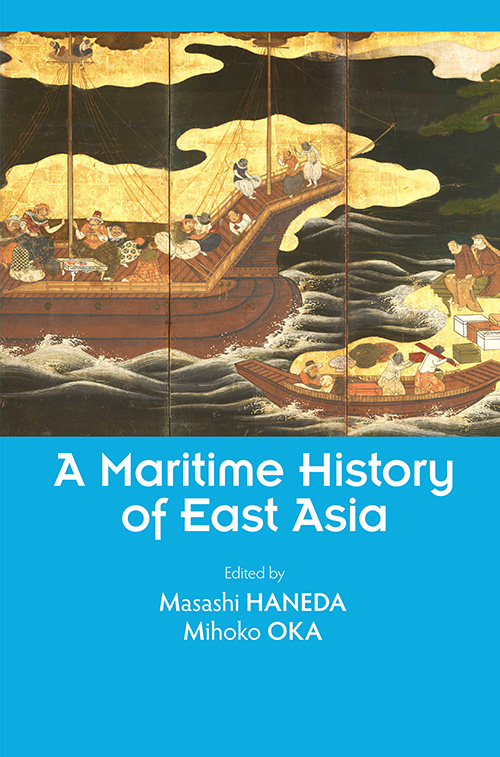ホーム > 書籍詳細ページ

A Maritime History of East Asia takes the reader on a fascinating journey through the history of a region from the perspective of the interactions that occurred on and were facilitated by the sea. The book is divided into three parts that each focus on a different hundred-year period between 1250 and 1800, characterized by ‘openness’, ‘competition’ and ‘compartmentalization’ respectively. The chapters in each part examine the people, goods and information, that flowed across the seas of the East Asian maritime world, facilitating cultural exchange and hybridity. The intricate and often fraught relations between China, Japan and Korea feature throughout, as well as those between these polities and the waves of outsiders that sought to trade with them and to conquer them. Regional diplomacy, ship-building technology, weaponry, Wokou pirate bands, the fates of castaways and the development of international trade networks are just some of the topics that paint a vivid picture of the interconnected world of the East Asian maritime region during this period.
Masashi Haneda is a professor at the Institute for Advanced Studies on Asia and vice- president in charge of global engagement of the University of Tokyo. He specializes in the field of world/global history and has published a number of academic works not only in Japanese, but also in English, French and Chinese, including Toward the Creation of a New World History (Japan Publishing Industry Foundation for Culture, 2018), and Gurobaru hisutorii-to higashi-ajia-shi (Global History and the History of East Asia) (University of Tokyo Press, 2016).
Mihoko Oka is an associate professor of the Historiographical Institute, the University of Tokyo. Her interests are broadly in the area of the maritime and economic history of East Asia in relation to European countries during the sixteenth to seventeenth centuries. She won the “17th Tçuzu Rodrigues Prize” (Prémio Literário “Rodrigues, o Intérprete”) for her monograph The Namban Trade: Merchants and Missionaries (University of Tokyo Press, 2010, in Japanese), and has also published numerous academic articles on Kirishitan history in Japan.
Mihoko Oka is an associate professor of the Historiographical Institute, the University of Tokyo. Her interests are broadly in the area of the maritime and economic history of East Asia in relation to European countries during the sixteenth to seventeenth centuries. She won the “17th Tçuzu Rodrigues Prize” (Prémio Literário “Rodrigues, o Intérprete”) for her monograph The Namban Trade: Merchants and Missionaries (University of Tokyo Press, 2010, in Japanese), and has also published numerous academic articles on Kirishitan history in Japan.
UTokyo BiblioPlaza 自著を語る
https://www.u-tokyo.ac.jp/biblioplaza/ja/E_00251.html
https://www.u-tokyo.ac.jp/biblioplaza/ja/E_00251.html
Figures
Tables
Photographs
Editors’ Biographies
Contributors to the English version
Acknowledgements
Preface to the English Edition
Prologue
Part 1: The Open Sea, from 1250 to 1350
1.1 General Overview
1.2 The Background to Maritime Interaction and Its Agents
1.3 Increased Openness: Maritime Merchants Expand Maritime Interactions
1.4 What Conflicts with the Mongols Wrought: Isolationism Within Openness
1.5 Traffic in Goods and Technology: Expanding the Field of Interaction and Mutual Exchange
Part 2: Competing for the Sea, from 1500 to 1600
2.1 General Overview
2.2 The Age of the Wokou: Transformations in the Structure of East Asian Trade
2.3 The Age of Maritime Merchants
2.4 Development of Diverse and Hybrid Cultures
Part 3: The Compartmentalized Sea, from 1700 to 1800
3.1 General Overview
3.2 Maritime Merchants and “Compartmentalization” Among Early Modern States
3.3 Compression and Concentration of Interactions and Residences
3.4 Trans-Oceanic Movements of Goods and Information
Bibliography
Historical Geography Index
Name Index
Subject Index
Tables
Photographs
Editors’ Biographies
Contributors to the English version
Acknowledgements
Preface to the English Edition
Prologue
Part 1: The Open Sea, from 1250 to 1350
1.1 General Overview
1.2 The Background to Maritime Interaction and Its Agents
1.3 Increased Openness: Maritime Merchants Expand Maritime Interactions
1.4 What Conflicts with the Mongols Wrought: Isolationism Within Openness
1.5 Traffic in Goods and Technology: Expanding the Field of Interaction and Mutual Exchange
Part 2: Competing for the Sea, from 1500 to 1600
2.1 General Overview
2.2 The Age of the Wokou: Transformations in the Structure of East Asian Trade
2.3 The Age of Maritime Merchants
2.4 Development of Diverse and Hybrid Cultures
Part 3: The Compartmentalized Sea, from 1700 to 1800
3.1 General Overview
3.2 Maritime Merchants and “Compartmentalization” Among Early Modern States
3.3 Compression and Concentration of Interactions and Residences
3.4 Trans-Oceanic Movements of Goods and Information
Bibliography
Historical Geography Index
Name Index
Subject Index












